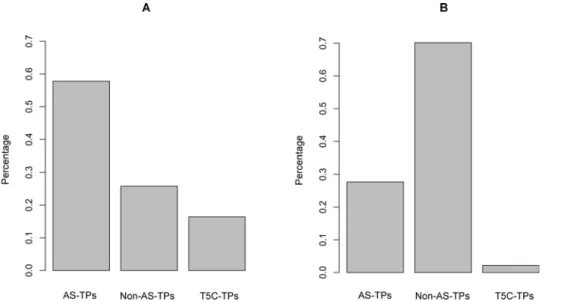Alternative promoters influence alternative splicing at the genomic level.
Texto
Imagem




Documentos relacionados
Cufflinks analysis of gene isoform expression levels, alternative splicing and alternative promoter usage revealed significant differences in transcriptome profiles between frontal
To investigate the impact of SRSF5 regulated expression on pre-mRNA splicing in erythroid cells, we undertook a functional analysis on alternative splicing of the endogenous
Assim sendo, acredita-se que os clientes da marca francesa continuam a comprar no seu website por estarem comprometidos com esta, o que significa que a lealdade dos clientes da
thermocellum σ I -factor genes that contain the predicted promoter and the upstream region of some cellulosomal genes that contain predicted σ I -dependent promoters were
This report describes the core promoters of genes transcribed in a circadian manner (hereaf- ter: circadian promoters) in mouse liver and in Drosophila , by integrating
Os ligandos são normalmente ligados covalentemente a um suporte sólido, por exemplo agarose, sendo que os ligandos utilizados podem ser compostos de peso molecular
Using this approach, approximately 50,000 peptides were identified in Uniprot and Splooce (data not shown), and from those only 236 peptides, confirming 218 splicing events, could
An alternative sequence based genotyping scheme of 6 loci including housekeeping genes, a 16S rRNA gene and genes encoding surface-expressed proteins has also been developed and used